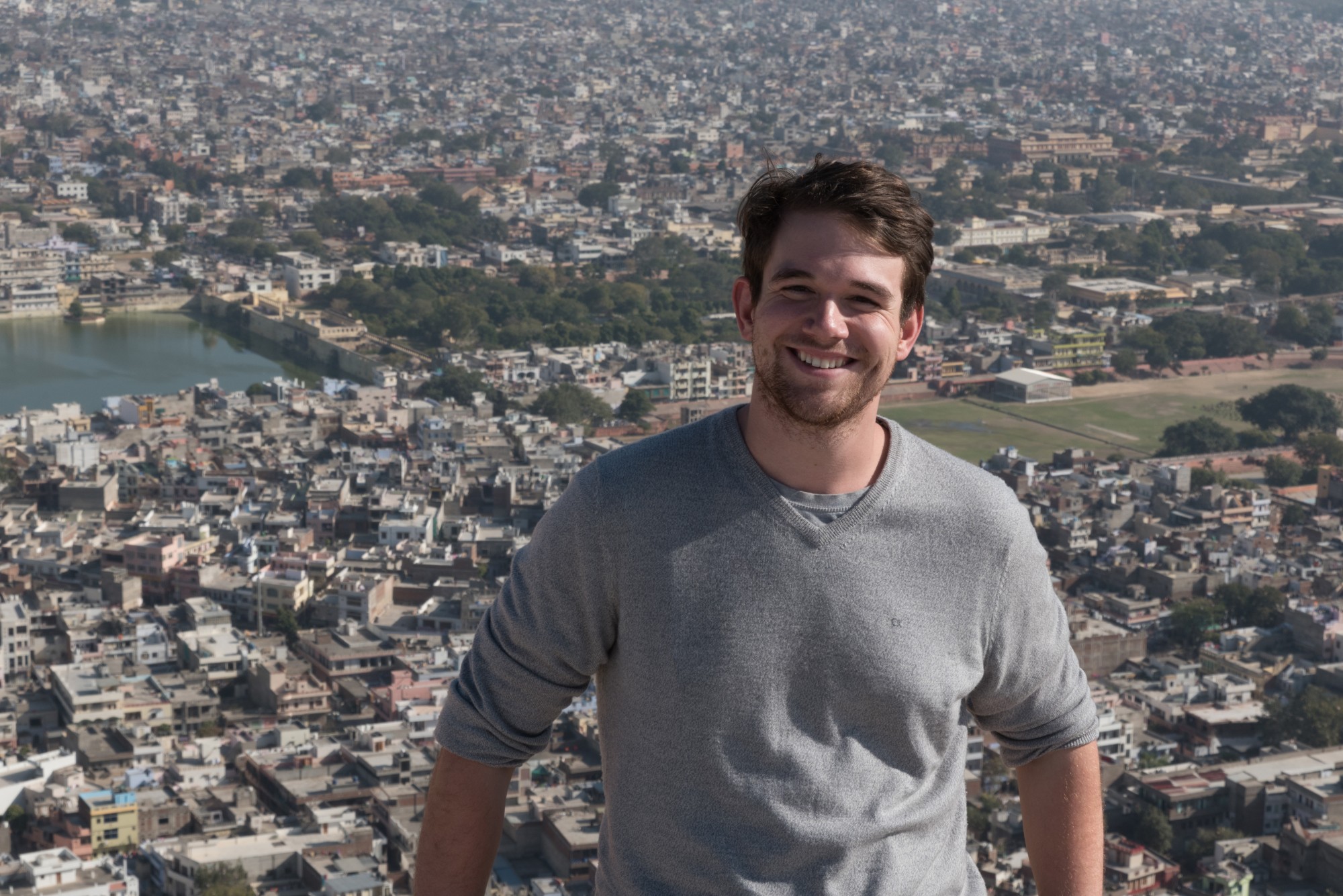 How one engineering graduate student is turning convention on its head to deliver a vital human resource – clean drinking water.
How one engineering graduate student is turning convention on its head to deliver a vital human resource – clean drinking water.
Dylan Verberg is an environmental engineering graduate student from the University of Windsor who spent nearly five months in the Indian capital, Delhi, contributing to an international research project funded by the India-Canada Centre for Innovative Multidisciplinary Partnerships to accelerate community transformation and sustainability (IC-impacts).
Growing up on a farm, Dylan’s experience with small construction projects has proved invaluable in his current challenge – deploying equipment in the New Delhi, India drainage pond in an attempt to improve the quality of a water system that serves as a lifeline for nearly 60 million people.
“For this project, we needed to solve a massive issue threatening a vital human resource – clean drinking water,” Verburg said. “To do this, we had to create a paradigm shift from traditional sewage management techniques and develop a tailored approach. Using the infrastructure available and highly optimized existing technology, we have been able to demonstrate the potential of utilizing and rejuvenating a polluted water body into an active environmental wastewater treatment plant.”
Verburg traveled to India between September 2017 and then again in February 2018 to help place a bubble tubing aeration system and infrastructure in Sonia Vihar Lake, a polluted water body – a source of Delhi’s drinking water. Heavy sewage pollution removes dissolved oxygen from water. This slows down degradation, causes odour issues and threatens lifeforms dependant on oxygen, Verburg said. The aeration tubing replenishes the dissolved oxygen, which allows beneficial bacteria to flourish and naturally restore the ecosystem.
“We often forget that sometimes the best instances of engineering are simple solutions that solve complex problems,” Verburg said. Now that Verburg has returned to Canada, he will review data and process it using various modelling techniques to better quantify the benefits of the added aeration. Liam Simone, a UWindsor undergraduate student, will continue where Verburg left off in India, performing water quality assessments and maintenance.
Verburg is now producing a water pollution lesson plan for high school students in India. His educational module will focus on the need for change or creative thinking, to find alternative cost and effective time solutions to curb water pollution. Simone will deliver the lessons to select schools in New Delhi.
Dr. Rajesh Seth, P.Eng., a UWindsor engineering professor who specializes in water and wastewater treatment, including advanced oxidation processes, is leading the project.
“One of most effective ways to improve water quality is using microorganisms to break down pollution,” Dr. Seth said. “Biological treatment with microorganisms is faster when dissolved oxygen is in the water. So, if we want to improve the rate of treatment of heavily contaminated water – and we use it quite extensively in waste water treatment in North America – we need to find an efficient and cost-effective way to replenish the dissolved oxygen that is quickly consumed.”
Canadianpond.ca Products Ltd., a Quebec company that designs and manufactures Bubble Tubing®, covered the costs of equipment and related infrastructure for this project. The company’s linear aeration system doesn’t require extensive infrastructure support and can be easily adapted to work directly in lakes and ponds.
Verburg created a blog to document the successes and obstacles experienced throughout his work on the project and to share stories about the people he met while immersing himself in a new culture. His blog is posted at uwindsor.ca/engineering/dylan-verburg.
“Looking back, this has been an absolutely amazing, eye-opening experience that has helped me grow, mature and develop skills professionally as well as personally,” Verburg said.
This article ran in the June 2018 issue of the The Voice, a magazine produced by the Ontario Society of Professional Engineers.
